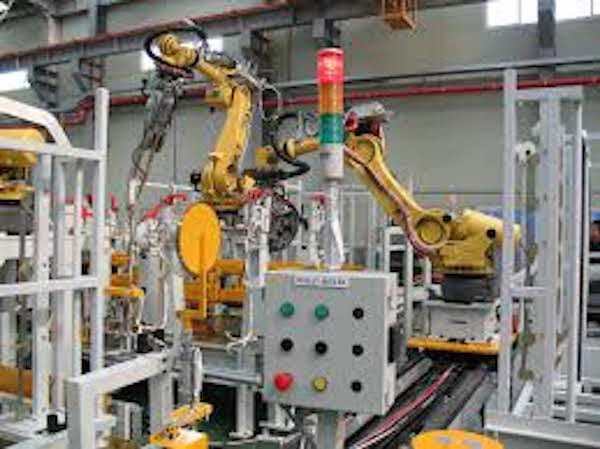
Going green has gone mainstream. It’s true that it can improve the overall efficiency of a business; it’s great for the environment, and it is cost-effective in the long term. But, it can hurt you before it even begins to help. A small business owner had this to say about the matter: “I think from small businesses all the way up to big businesses it’s rough trying to change things up and go green. I mean, we’re worth it and the Earth is definitely worth it, but a business advisor would say it doesn’t make [profitable] sense to change over.” In this article, you’ll read about ten blows to the bottom line a business can experience when finally making the switch.
The Cost of Conversion

This is one that hits businesses right out of the gate. Businesses have to first make the decision and then they’re going to need to hire consultants to figure out how to begin going green. Those consultants can be extremely expensive depending on the size of the business, and it is going to create more spending regardless, and cut into profits. If a business doesn’t choose to use a consultant, they will still have to set aside money to invest in all of the changes that are to follow.
The Cost of Education

This point ties into the last; however, the people who run the business may know a few things about what it means to move towards a more sustainable and eco-friendly business model but there will still be a lot to learn regardless. That education has to come from reputable sources or individuals, and it isn’t going to come free. In turn, employees will need to be taught about the new practices, and sometimes that education will have to extend to consumers, investors, and so on. Even if the people that a business hires aren’t extremely costly, there is a huge time investment that will need to be made.
The Cost of New Equipment

If a manufacturing company or a company that specializes in a certain line of products decides to move towards more environmentally conscious practices, some of the current equipment may need to be done away with. Bringing in the new equipment, and sometimes even having that equipment built, is going to be quite the undertaking. Even if all a business does is try to reduce how much water they use, an average low-flow toilet can be over $100. There are also things like LED bulbs, motion sensor lighting, and more; and it all costs money.
The Cost of Retraining

New equipment, new practices, and new policies are all a part of the process of creating a greener business, and employees are going to need to be brought up to speed on those things. Even if a business doesn’t bring in outside help for this, it is still going to cost them. Retraining takes time away from production because employees will need to be brought in and paid for the time that they are there, but they will be away from their usual positions and sitting in on training sessions. In addition, production might even slow down due to that learning curve.
The Cost of Recycling

Recycling is something that most businesses are already doing, but making a higher commitment to recycling is going to bring with it a higher cost. A business might need to change waste management companies, buy new dumpsters and recycling receptacles, and then on top of that, they will need to invest more time in making sure that certain waste products like paper, plastic, glass, etc. are going into the right place and are prepared to be recycled.
The Cost of Marketing

Current trends are showing that consumers recognize the sustainability efforts that companies are making, and that’s great. However, how are the customers going to learn that a business is making those efforts? The answer is marketing. The popular series Shark Tank had a product that we all use all the time pitched to them with a green twist, it is a pizza box called the Green Box. Kevin O’Leary was outspoken about this problem; if you want customers to know that your product is better for the environment, you have to tell them. Getting the word out is going to mean marketing dollars are going towards that, and it may also disrupt current campaigns even if they’ve been successful so far.
The Cost of New Software

Going paperless is a hallmark of making a business more environmentally sound. But, going paperless means investing in new software for bookkeeping, investing in training employees on how to use it, it may even mean that a business needs to hire new people to do the books. Also, in order to keep things running smoothly, all of the current records would need to be digitized. Depending on the scope of the business, that could take weeks to do and is going to disrupt the regular duties of whoever takes care of the record keeping. Employees would also need to be brought up to speed on how to operate the software.
The Cost of Keeping Customers

Whenever changes are made to a product, even if they are positive changes, there will be customer backlash. The current problems that SnapChat is facing is a great example of this. The functionality and user interface have both improved drastically, but the consumer outcry has been resounding. When the way a certain product is made or packaged, customers might not react positively, which isn’t guaranteed, but it can be an expensive hurdle to get over. This will cut into marketing dollars, and may even require businesses to go back to the drawing board a few times to figure out how to provide the same customer experience without the same environmental consequences.
The Cost of Keeping Investors

Whenever a company makes changes, investors will raise their brows. In a transitional state, a business has the potential to just not be as profitable or attractive to any current or potential investors. It might be harder to source materials, production costs could skyrocket as the business adapts, stock prices can get shaky; investors love to make money and they’ve put their trust in the business as it was at the time. The changes can make things unstable until the business has fully acclimated, and instability is a surefire investor repellent.
The Cost of “Going Green”

Going public with these changes is part of what makes going green so beneficial for a business, because it draws the eyes of potential customers, and can even make existing customers feel better about spending their money with a particular business. However, there is a lot that has to happen in order for products or services to get the proper certifications that allow them to advertise that they’re greener. There may be additional inspections that are needed, licensing fees, and even legal help to navigate solidifying a business’ “green” status.